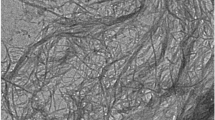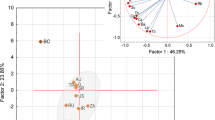Abstract
Cigarette smoke is an ever changing and extremely complex mixture of over 5000 chemicals. When the cigarette burns, thousands of chemical substances are generated, and these are distributed between the gas phase and the particles which constitute the smoke aerosol.
Activated carbon when used in a filter can selectively remove a number of the vapour phase compounds to varying degrees of efficiency.
Carbons of different activities (50–60% CTC and 90–100% CTC) have been characterised using nitrogen adsorption and also the sorption of a number of different vapours with different properties, using a dynamic gravimetric adsorption technique.
Surface areas, pore volumes, diffusivities and heats of adsorption were calculated using nitrogen, benzene, heptane, ethyl acetate and water as the probe molecules.
Smoke chemistries were measured using a screening approach on the characterised carbons as filter additives. It was seen that the higher activity carbon results in increased retention in the majority of the measured vapour phase smoke constituents.
Similar content being viewed by others
References
Branton, P.J., et al.: Physisorption of argon, nitrogen and oxygen by MCM-41, a model mesoporous adsorbent. J. Chem. Soc., Faraday Trans. 90, 2965–2969 (1994)
Baker, R.: Tobacco: Production, Chemistry and Technology, pp. 398–404. Blackwell Science, Oxford (1999)
Hoffmann, D., Hoffmann, I.: J. Toxicol. Environ. Health 50, 307 (1997)
International Organization for Standardization: ISO 3308: Routine analytical cigarette smoking machine—definitions and standard conditions (1991)
Layten, D., Nielsen, M.T.: Tobacco: Production, Chemistry and Technology, pp. 265–284. Blackwell Science, Oxford (1999)
Muramatsu, M.: Studies on the transport phenomena in naturally smouldering cigarettes. Sci. Papers Central Res. Inst. Japan Tob. Salt Mon. Corp. 123, 9–77 (1981)
Newsome, J.R., Keith, C.H.: Vapour phase analysis of tobacco smoke. Tob. Sci. 9, 102–110 (1965)
Rouquerol, F., et al.: Adsorption by Powders and Porous Solids. Academic Press, London (1999), Chapter 9
Thielmann, F., Baumgarten, E.: Surface Measurement Systems Application Note 215: Inverse Gas Chromatography (2006)
Thomsen, H.V.: International reference method for the smoking of cigarettes. Recent. Adv. Tob. Sci. 18, 69–94 (1992)
Author information
Authors and Affiliations
Corresponding author
Rights and permissions
About this article
Cite this article
Mola, M., Hallum, M. & Branton, P. The characterisation and evaluation of activated carbon in a cigarette filter. Adsorption 14, 335–341 (2008). https://doi.org/10.1007/s10450-008-9103-3
Received:
Revised:
Accepted:
Published:
Issue Date:
DOI: https://doi.org/10.1007/s10450-008-9103-3




